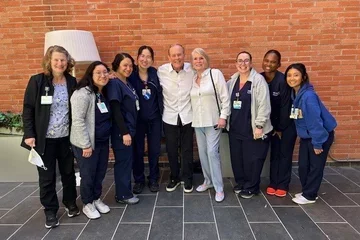Scientists identify compound that stimulates muscle cells in mice

UCLA researchers have identified a compound that can reproduce the effect of exercise in muscle cells in mice. The findings are published in the journal Cell Reports Medicine.
Normally, muscles get stronger as they are used, thanks to a series of chemical signals inside muscle cells. The newly identified compound activates those signals, which suggests that compounds like it could eventually be used to treat people with limb girdle muscular dystrophy, a form of adolescent-onset muscular dystrophy.
Melissa Spencer—the paper’s senior author and a professor of neurology, director of the neuromuscular program at the David Geffen School of Medicine at UCLA and member of the Eli and Edythe Broad Center of Regenerative Medicine and Stem Cell Research at UCLA—and her collaborators are planning further studies to understand how the chemical compound AMBMP affects the muscle cell enzyme CaMK and to identify similar compounds that could be more effective in humans. UCLA neurology professor Vargehese John, associate researcher Irina Kramerova and staff research associate Jesus Campagna, co-authors of the new study, are already producing new compounds similar to AMBMP. Spencer and Kramerova will test those compounds in mice to determine the best drug candidate to advance to clinical trials.
Read the full press release from the Eli and Edythe Broad Center of Regenerative Medicine and Stem Cell Research at UCLA.
The research was supported in by a UCLA David Geffen School of Medicine and UCLA CTSI Seed Grant Award. Additional support comes from MyDirectives Universal Advance Digital Directive, the National Institute of Arthritis and Musculoskeletal and Skin Diseases and Strongbridge Biopharma.
Image source: UCLA Health
Image caption: Melissa Spencer worked with UCLA colleagues to screen more than 2,000 compounds as part of the research.



